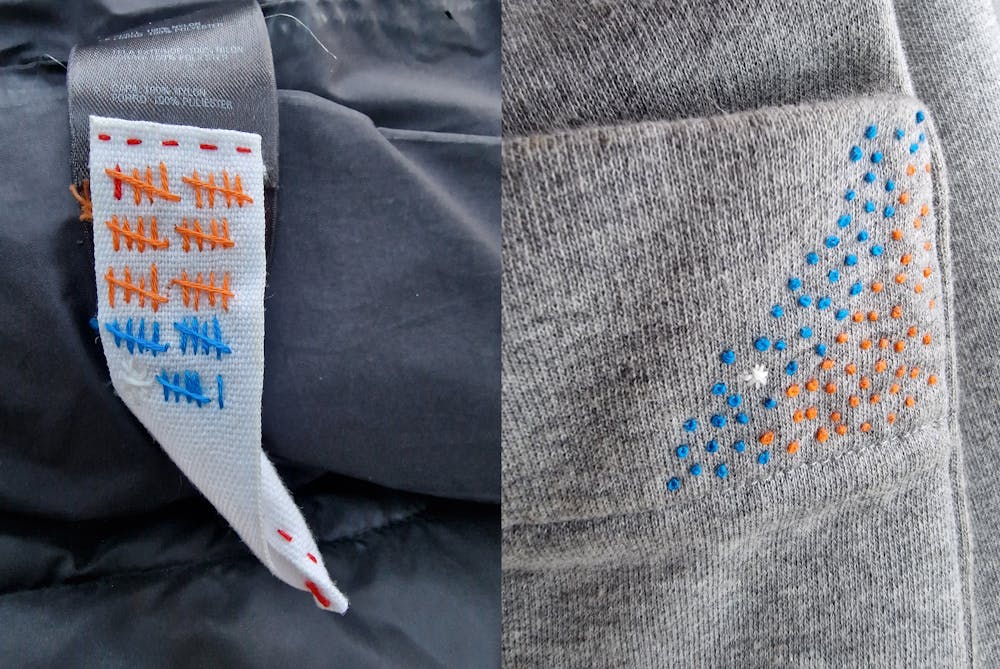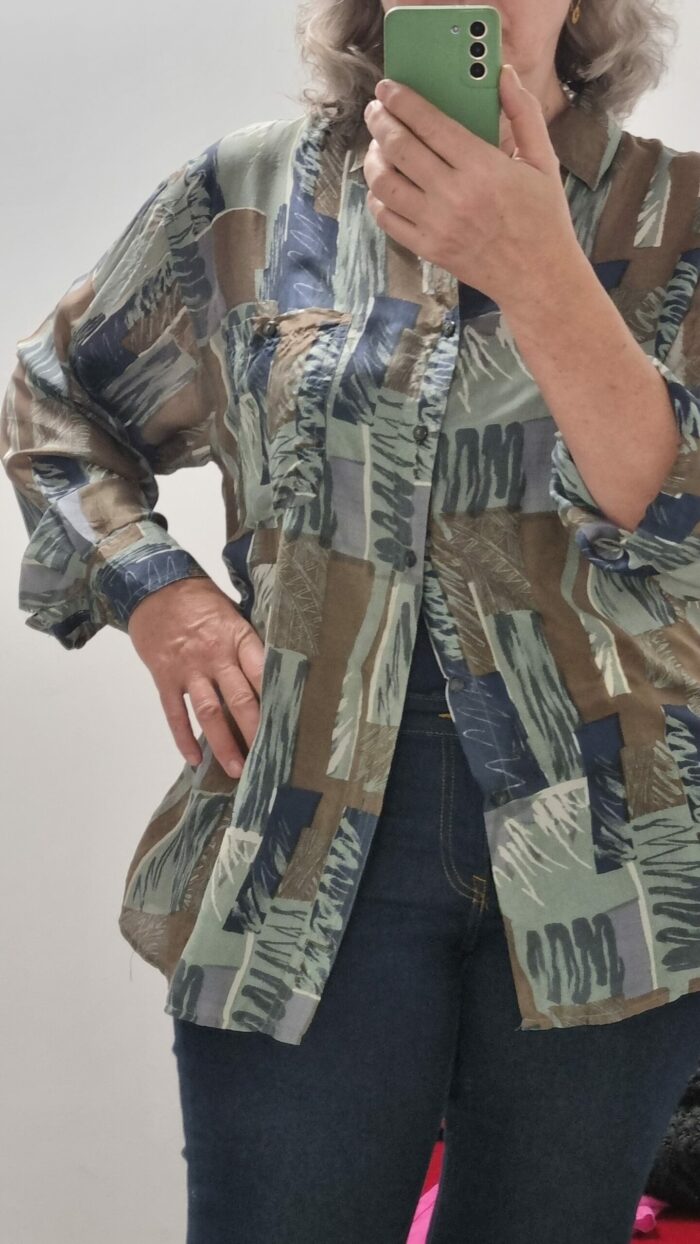Wendy Ward keeps track of her clothing, how often she wears it, literally marking the Wears, and trying to work out why so many of us, keep buying more.
https://www.instagram.com/p/DGdW4uCtgyA/?utm_source=ig_web_button_share_sheet&igsh=MzRlODBiNWFlZA==

Checkmarks showing each wear, #are made with single, perfect, and colourful stitches directly on her clothes, which become part of both her personal craft, and her doctoral research. Her father loved his soft, worn, comfortable clothes, like this gorgeous 80% wool cardigan slowly becoming meshed with marks showing how often she wears this inherited piece. Wendy speaks of how her father’s repairs of his favourite pieces was part of her childhood. She has been a clothes designer, a teacher of making and repairing clothes, and developed easy-to-use patterns and books on sewing, dressmaking, and design. #
After a Masters in During Covid, UK-based fashion designer and PhD student Wendy Ward
“It’s so easy with fashion to be tempted by the constant churn of new styles and colours and to lose sight of what you’re actually likely to enjoy wearing regularly,” Wendy says, adding a stitch to her clothes every time she wears them.
She’s spending more time with her clothes and looking at them in far more detail, which not only allows reflection on how they make her feel but is a great way to spot would-be stains or damage to fix before they become a bigger issue.
“When I take time to sew a stitch into a garment, I’m looking at … the things you don’t really pay attention to when wearing your clothes,” Ward says. Regularly checking in with, inspecting, and auditing clothing builds a relationship of sorts, so clothing stops being a fleeting addition to wardrobes and becomes something worth investing in and caring for.
From article in I News about Caring for Clothes
As part of her PhD research, Ms Ward has been experimenting with ways to encourage people to fall in love with the clothes they already own, and examining whether this could lead to more sustainable consumption. The clothes people already own were, after all, the most sustainable ones, she says.
As part of her PhD research, Sheffield-based designer, maker and eco activist Ms Ward has been experimenting with ways to encourage people to fall in love with the clothes they already own, and examining whether this could lead to more sustainable consumption.
Through creative writing, drawing and photography workshops, she encourages people to “reconnect with clothes, and the stories … and the meanings that are held in them.
I believe in small, individual acts of resistance: celebrating that loved garment through creative writing or a portrait; mending that hole or tear; redyeing that faded t-shirt; being seen in the same outfit multiple times; or engaging in ‘guerilla EPR’ by returning your end-of-life garments to the brands that made them.”
“I get really frustrated by an unwillingness to think differently: from designers, brands and manufacturers, all the way through to consumers and those dealing with our textile waste. Fashion is supposed to be a space of innovation, creativity and future-thinking, but it seems to have lost that ability. The preferred option always seems to be: ‘business as usual’ (aka overproduction and overconsumption) but with a few tweaks such as a factory powered by solar panels, or a fabric made from recycled bottles. The difficult ‘messy’ work of production and end-of-life disposal is always kept ‘out of sight, out of mind’ for consumers in the Global North, resulting in consumers who have little awareness of what it takes to make their clothes and dispose of them once they’ve finished with them.”
Most recently I’ve personally felt extremely conflicted about end-of-life clothing. So much so that I’m now keeping hold of all of mine and my partner’s clothing that fall into this category as I don’t believe a satisfactory system currently exists in the UK to deal with it. I don’t want my textile waste to be incinerated in a so-called energy recovery facility contributing to local air pollution or to be exported to the Global South contributing to waste colonialism .
“Fashion is a lot about storytelling — and brands are often very keen to do that storytelling for us, but if we are more connected to our clothes, we can use our clothes to do our own storytelling,” she says.
Reconnecting with your clothes
Wendy has done an audit to discover how many garments she owns and is now tracking how often she wears them.
Ms Ward says knowing what garments she wears a lot has made her love them even more.
Resources:
https://linktr.ee/thatwendyward
https://concernedresearchers.org/blog/18-wendy-ward-mom-apr-2025-xdmxm-caghl-xdxh2


